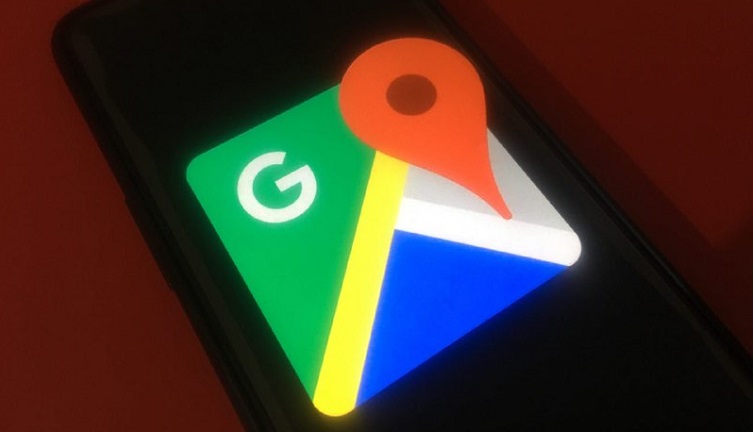#POLL ALERT!
— PiunikaWeb (@PiunikaWeb) March 14, 2021
Is Samsung becoming Android’s software updates benchmark (ahead of Nokia & OnePlus) with the speedy Android 11 rollout?
Vote below and read our opinion here: https://t.co/4hJG602P4c#Android #Android11 #Google #Samsung #Nokia #OnePlus #OneUI3 #OxygenOS11 #update
New updates are being added to the bottom of the story…
Original story (from March 14, 2021) follows:
Android is known for not only its open-source nature that allows anyone to pick the AOSP code and build their own version of the OS, but also for its massively fragmented ecosystem.
It’s normal to come across boatloads of Android phones still running outdated software, both security patches and the underlying OS version.
The result of this has been woeful Android OS distribution numbers over the years, but in the recent past Google has been pushing several initiatives aimed at improving the adoption rate.
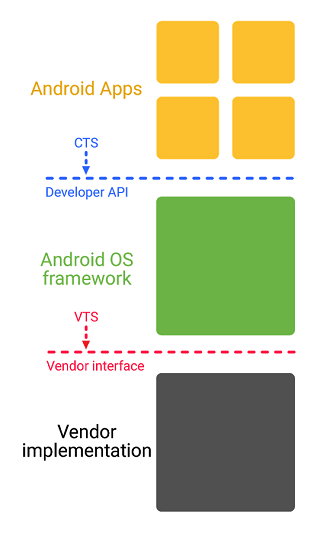
At some point, even Google seemingly felt ashamed of the poor adoption rate that it took an unofficial leave away from regularly updating the Android OS distribution numbers.
When the search giant made a comeback, the numbers were no longer easily accessible to everyone as before, this time buried deep in Android Studio and only meant for developers.
Looking at recent distribution numbers, though, it looks like the several initiatives by Google such as Project Treble and Project Mainline might actually be working.
In a report by StatCounter, the U.S. market already has over 20% of Android devices running on the latest Android 11. This is just 5 months since the OS became available, a stat never heard of before.
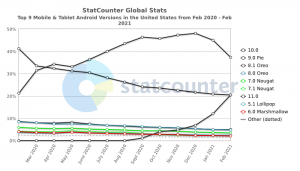
This builds on from the steady improvements witnessed across Android 10 and Android Pie adoption rates, making Android 11 the one with the fastest-growing adoption rate of all time.
Being the leading smartphone vendor in the world, Samsung has often been accused of slowing down the adoption rate of new OS versions.
After all, given the market share, updating most or all Samsung Galaxy devices to a new OS version will definitely spike the overall distribution numbers of the OS.
Since Samsung was often among the slowest to push new versions of Android to eligible devices, the adoption rate was equally slow. But over the recent past, there have been noticeable changes.

Samsung has not only massively stepped up its software update efforts over the recent past, but it has become so good that the likes of OnePlus and Nokia — once known for their timely updates — are seeing dust.
In fact, Counterpoint Research has over the past couple of years ranked Nokia and OnePlus ahead of Samsung when it comes to rolling out timely software updates.
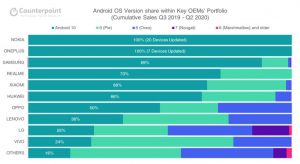
But the tables have now turned in favor of Samsung, something that Android 11 adoption rate is pretty vivid about. Today, only four OnePlus devices have the stable version of OxygenOS 11 based on Android 11.
The OnePlus 8T runs it out of the box while the OnePlus 8, OnePlus 8 Pro and OnePlus Nord are the only ones to bag the stable update, although the latter has been rolled back due to bugs.
Even with its small portfolio, OnePlus hasn’t been able to push the stable Android 11 update to all devices 5 months later. The story is no different with Nokia, which has only managed to update one device to date.
The Nokia 8.3 5G and Nokia 8.1 were expected to bag the update in Q4 2020, but it ended up arriving in February 2021 for the 8.3 and is yet to roll out for the 8.1.
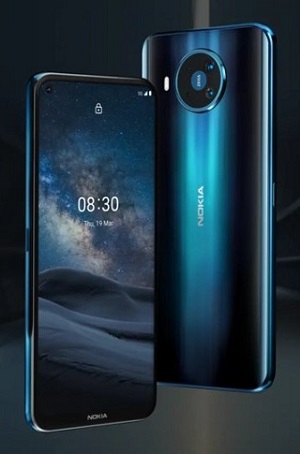
As I write this, our One UI 3.0 and One UI 3.1 trackers can confirm that Samsung has upgraded more than 35 devices to the latest Android 11 update, including their Lite/Plus/Ultra variants.
It started with the Galaxy S20 series back in 2020 before the Galaxy Note 20 family joined the party shortly after. Ever since, Samsung has been on a roll, upgrading device after device to Android 11 update, sometimes even daily.
Despite the huge catalog, Samsung is likely to wind up the wider Android 11 rollout ahead of Nokia and other vendors and march on to Android 12 development, although it’s unlikely to join Google’s developer preview program.

This wasn’t your usual dose a couple or so years ago, which further suggests that Google’s initiatives to speed up Android rollout must be working for vendors who are actually serious about it.
Perhaps this is the same reason we see plenty of Oppo, Realme, Vivo, and Xiaomi devices on the receiving end of Android OS updates more frequently than before and on a more timely basis as well.
Out of all these, what stands out is that the speedy rollout of Android 11 update implies Samsung has gotten way better in terms of software updates, even to a point that OnePlus and Nokia may never catch up.
What do you think? Has Samsung become the benchmark for Android software updates? Share your thoughts in the comments section below. You can also cast your vote on the Twitter poll below.
Update 1 (March 21)
And our readers have spoken. While 79.3% of those who voted believe that yes, so far, Samsung has outperformed with a speedy release of Android 11, 10.3% say that’s not the case, and the other 10.3% have left it on time to see how things go in the future.
NOTE: The article will be updated with the results after a week of polling.
PiunikaWeb started as purely an investigative tech journalism website with main focus on ‘breaking’ or ‘exclusive’ news. In no time, our stories got picked up by the likes of Forbes, Foxnews, Gizmodo, TechCrunch, Engadget, The Verge, Macrumors, and many others. Want to know more about us? Head here.

![[Poll results out] Android 11 update rollout: Samsung marches on as Nokia & OnePlus crumble [Poll results out] Android 11 update rollout: Samsung marches on as Nokia & OnePlus crumble](https://stage.onepluscorner.com/wp-content/uploads/2021/02/samsung-4-years-security-updates.jpg)
